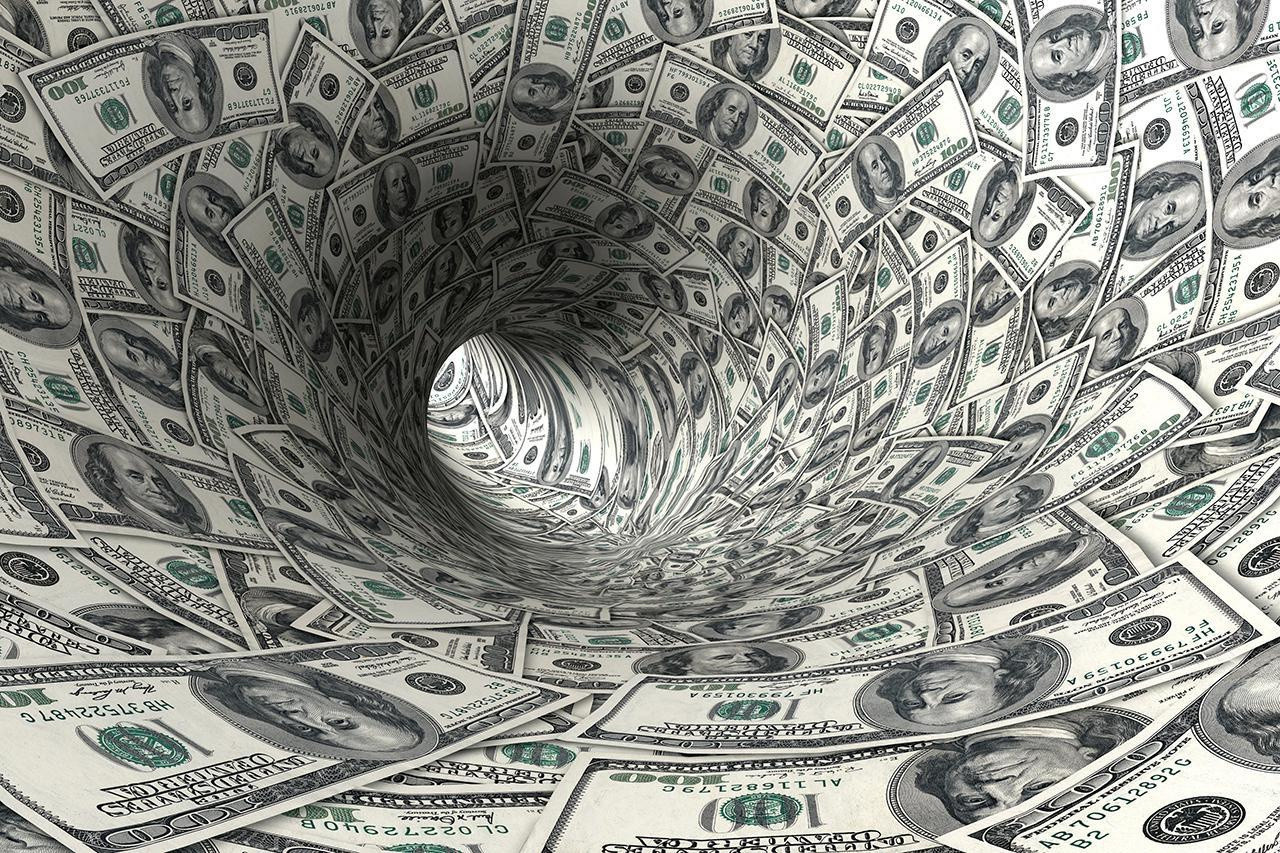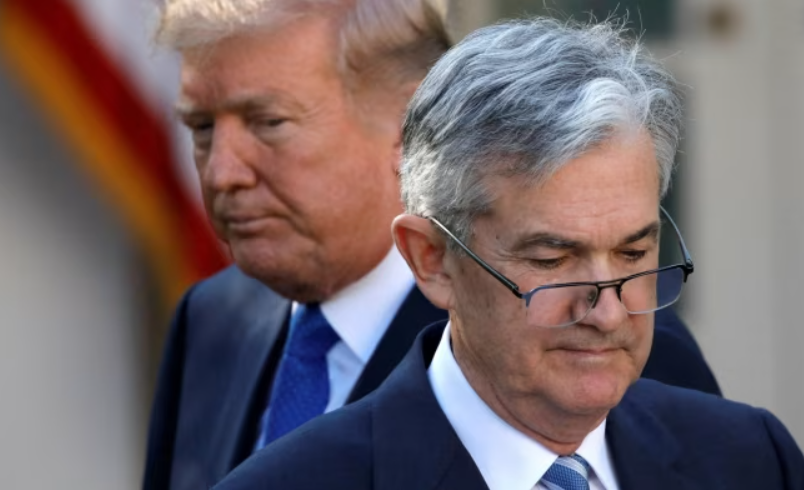The unusual movements of U.S. Treasuries and the dollar reflect not only a global reassessment but also questions about America’s national power and international standing. The dollar’s hegemony may soon face a critical turning point.

Recently, U.S. treasury yields have hit record highs, while the U.S. dollar index has continued to decline. This development reflects more than a fluctuation in financial indicators. It signals a significant adjustment in underlying market supply and demand.
In recent years, Washington’s fiscal deficit has continued to expand. In fiscal 2024, the federal budget deficit reached $1.8 trillion, the highest level in two centuries outside of the COVID-19 pandemic. Despite President Donald Trump’s pledges to increase revenue and cut spending, government borrowing has continued to grow, exceeding $1.3 trillion in the first half of fiscal 2025 (ending in March). According to the Congressional Budget Office, the One Big Beautiful Bill Act promoted by the Trump administration will add an estimated $3.4 trillion to the U.S. government’s debt over the next decade. Consequently, the Treasury Department has been forced to ramp up debt issuance. As of August this year, federal debt had climbed past $37 trillion, with the debt-to-GDP ratio nearing 140 percent and annual interest payments approaching $1 trillion.

What Can the Fed Do About the Deficit? Nothing
Mounting interest costs are a key reason Trump is pressing the Federal Reserve to cut interest rates. However, market demand for U.S. Treasuries appears weaker than expected. Global central banks and institutional investors, including those in the United States, have not been purchasing long-term treasuries at the pace the government anticipated. The sharp increase in supply and the relative lack of demand have placed downward pressure on treasuries’ prices and directly pushed up yields, with the 30-year bond yield briefly crossing the 5 percent mark. At a recent conference, Ray Dalio, founder of Bridgewater Associates, said the U.S. government would need to issue an additional $12 trillion in bonds to cover a $2 trillion deficit, $1 trillion in interest payments and $9 trillion in refinancing costs for maturing debt. But there is currently insufficient market demand to absorb that volume of issuance, thus leading to a supply-demand imbalance.
While Dalio’s figure may not be exact, it is nonetheless revealing. Since January, the dollar index has fallen by over 10 percent, slipping below 97 several times. After Trump announced sweeping reciprocal tariffs in April, both 10-year and 30-year treasuries surged, but the index dropped sharply and has fallen below 100 over several days, reaching a nearly three-year low. By contrast, from June 2021 to September 2022, it saw steady growth. The unusual coexistence of weak treasuries and a weak dollar has therefore attracted significant market attention.
From a technical perspective, many factors can explain the fluctuations of the index, but examining the relationship between the dollar and treasuries provides a more interesting answer. The Bretton Woods system established a peg between the dollar and gold and formed a gold exchange standard centered on the dollar. In 1971, Washington suspended the official conversion of gold at $35 per ounce, marking the collapse of the Bretton Woods system and ushering in the era of floating exchange rates. Assets such as U.S. treasuries have become the primary pillar for the dollar.
For decades, treasuries, as the world’s largest, most liquid and relatively safe asset, have met the needs of global central banks for foreign exchange reserves and underpinned the dollar and the U.S. fiscal system in a mutually reinforcing cycle. In other words, the dollar is now both a “credit dollar” and a “debt dollar” backed by U.S. treasuries.
However, the correlation between the yields of treasuries and the dollar index is not static. A booming U.S. economy could drive investors towards higher-yielding dollar assets, leading to a simultaneous rise in the dollar index and treasury yields. Conversely, a flight to safety could can push up demand for treasuries, lifting in the dollar index while driving treasury yields lower. In either case, the outcome tends to be favorable to the United States.
But a rare scenario can also occur: If markets begin to doubt the U.S. government’s creditworthiness, demand for treasuries could weaken; or, if the government issues far more bonds than the market is willing to absorb, it may be forced to sell them at a discount. Either case could lead to higher treasury yields. In such a scenario, market pessimism about the U.S. economy could mean that funds leaving treasuries might not flow into other dollar-denominated assets but rather move into other markets or currencies, thereby pushing the dollar index lower.
In fact, this is exactly what is happening now. The dynamic is similar to that of a large corporation: When its business performance is strong, investors are willing to pay high prices for its bonds and provide financing despite its high debt levels. However, if concerns emerge about its strained capital chain, investors may cut back, refuse to roll over maturing bonds and dump its bonds at low prices. Corporate history is full of examples of companies that collapsed overnight under such conditions.
U.S. treasuries and the dollar are two crucial pillars of the current global financial system. To maintain market stability, it is essential that both remain sound in the long term. As the issuer, the United States bears the responsibility for safeguarding global financial stability. Restoring market trust in treasuries and the dollar now depends on two factors: first, whether Washington can effectively control its fiscal deficit, achieve a more sustainable balance of payments and thus enhance market confidence in treasuries; and, second, whether it can uphold the independence of its monetary policy and allow the dollar's value to be determined by the market — rather than political interference — thereby enhancing market confidence in the currency. Even a partial alleviation of the debt crisis would go a long way toward stabilizing expectations.
But it now appears that the Trump administration's policies are undermining, rather than maintaining, the stability of U.S. debt and the dollar. Although Trump has repeatedly pledged, both during his campaign and after taking office, to increase revenue and reduce spending, the U.S. fiscal deficit has only continued to widen. Increasing tariffs and cutting domestic institutions have, to some extent, been used by the president to achieve these goals and sideline opponents, but their impact on fiscal consolidation has been limited. Further, his pressure on the Federal Reserve has heightened uncertainty surrounding the dollar. Together, these dynamics have subjected the U.S. fiscal and monetary systems to a rare systemic shock, one that, left unaddressed, could plunge the global financial system into huge danger.
The unusual movements of U.S. treasuries and the dollar reflect not only a global reassessment of “credit dollar” or “debt dollar” but also questions about U.S. national power and international standing. If Washington fails to restore fiscal health or at least demonstrate signs of recovery, the global financial system is likely to undergo significant historical changes and the dollar’s long-standing hegemony may soon face a critical turning point.
